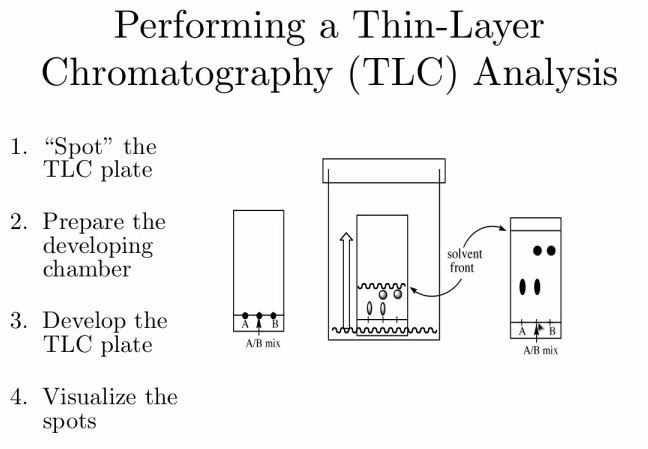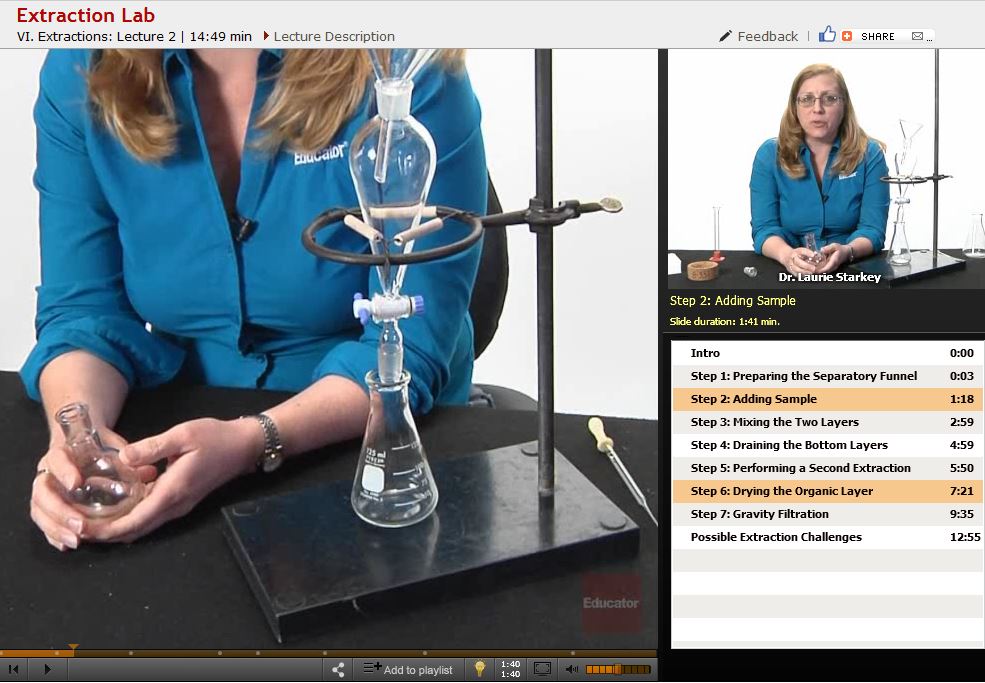Chemistry is both an art and science. In the classroom, you study the science part—the way that carbon atoms form bonds and react to make interesting molecules. And as most chemistry students know, there is an awful lot of science to memorize.
Where Science Meets Art
Ironically, the lab component is actually more like an art. It involves some knowledge, but your ability to mix, pour, and measure accurately, as well as remember instructions like how to set up an alcohol-water ice bath or prepare a Grignard reagent, become much more important than whether or not you can draw the electron flow of a reaction.
Compared to all the memorization required for organic chemistry, this sounds like a piece of cake—until you step into the lab and are surrounded by unfamiliar equipment and more solvents than you’ve ever seen in your life.
But don’t panic! If you approach labs the right way, they can be a huge asset to your future studies. They help reinforce the sometimes elusive concepts you’re learning in the classroom, and getting familiar with all that equipment can lay the foundation for a successful research career.
Which path?
If you are planning a lab-oriented career, your lab time becomes doubly important. It may sound like an exaggeration, but a large portion of being a successful chemist is having good technique, whether you’re titrating, measuring, setting up equipment, weighing out compounds, or preparing a sample for analysis. It’s crucial to develop good habits and learn the basic techniques.
But even if you’re not planning to work in a lab forever, you can learn a lot from seeing what textbook chemistry looks like in the real world.
Connecting the dots
It can be challenging to go from theoretical models, electron counting, and line drawings to the world of powders, solvents, and fume hoods. Suddenly, all of those by-products and solvents are crucially important—and getting in the way of your pristine crystalline product.
But if you can correlate the powders you’re mixing up in the lab with the diagrams in the rest of your course, it will give you illustrated knowledge that will help you remember theoretical concepts when finals roll around.
Surviving the lab
But in order to make it to the end of the semester, you’ll have to survive quite a few grueling hours surrounded by Formica, fluorescent lights, and the acrid smell of solvents you’ll come to know and love. Here are a few tips to help your time in the lab be a success.
1. Develop good habits
If you’re a sci-fi or fantasy literature fan, it might be a good time to revisit Patrick Rothfuss’s The Name of the Wind for a primer on the rules of the lab: “Label clearly. Measure twice. Eat elsewhere.”
Those three rules will get you pretty far, and your lab will probably have several more posted, like wearing closed-toe shoes, lab coat and safety goggles and keeping water away from the acid baths.
When possible, develop other good habits like staying hydrated (again, outside the lab, and only after proper handwashing), keeping your materials organized, and staying focused on the goal of the experiment. It’s easy to get lost in all the instructions and forget what you’re actually trying to accomplish!
2. Stay aware
Highschool and college chemistry labs are far from the most dangerous places on the planet, but when things go wrong, they can go very wrong. Stay aware of possible risks to yourself and others, and keep an eye on what’s going on in other parts of the lab.
Memorize routines like adding acid to water to dilute it (not water to acid, which can cause a violent exothermic reaction!), taking latex gloves off properly (carefully grab the edge at the wrist and turn them inside out so chemicals on the surface never touch your skin), and when to use fume hoods for safety (when in doubt, ask!).
3. Prepare ahead
Yes, lab assistants are (usually) helpful, but if you want to save time, it’s worth familiarizing yourself with each lab ahead of time—but don’t just read the instructions. Try these steps:
- Understand the concept. Try to figure out what reactions you’re doing, what they would look like on a molecular level, and how to connect them with what you’re learning in class.
- Know your tools. Look up any equipment you’re unfamiliar with, whether it’s glassware (Buchner flasks and Erlenmeyer flasks are very different things!), separating funnels, rotary evaporators, or vacuum filtration systems. If you at least know what they look like, it will be a lot less intimidating to set one up.
- Take note of the techniques—and how they help you achieve the goals of the lab. Start a running list and add techniques with every lab. This should include things like titrating, distilling, separating organic/aqueous solutions, evaporating solvent, filtering or purifying compounds, and recrystalizing your product. Try to understand how each technique gets you one step closer to your goal so that you can use those techniques yourself when needed.
- Learn a little bit about how analytic techniques work. You’ll need to practice reading NMR and IR scans to prove that you actually made what you think you made. A lot of this falls more under the area of physical chemistry, but it will make your life much easier (and impress the person grading your reports) if you know different ways to verify your product.
4. Remember the big picture
Everything you’re learning in the lab—even if some of it seems pointless at times—will help you become a better scientist, student, and thinker, even if you have a non-lab-oriented career in mind. Learning to pay attention to detail, make connections between theory and practice, and perform complicated tasks will serve you well in almost any field.
Want to see live demonstrations of Ochem Labs?
[box type=”success” align=”” class=”” width=””]Check out our online Organic Chemistry Lab videos where Dr. Laurie Starkey will perform each procedure clearly so you don’t have to wait in line for questions during lab—making you more successful and (possibly) helping you get home early.[/box]













































